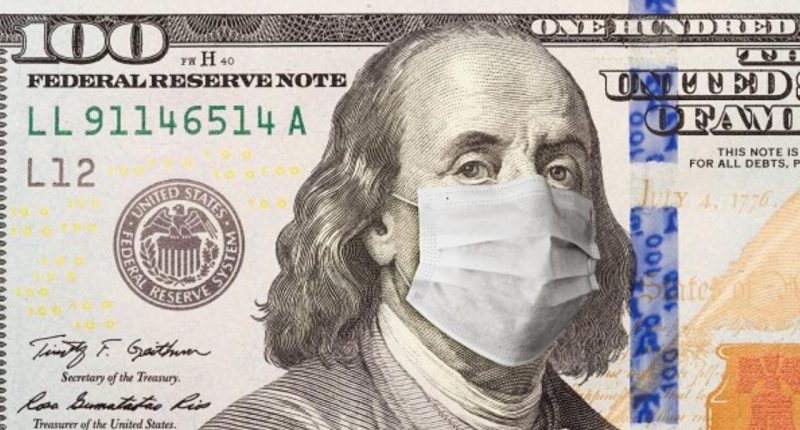- The U.S. dollar sunk to its lowest point in two years overnight as the coronavirus continues to spread across the States
- The immediate response was a surge in the price of gold as the precious metal becomes more affordable relative to other currencies
- With most commodities priced in U.S. dollars, a weak currency in the States generally bodes well for Australia’s export-heavy market
- The weak U.S. currency caused a rise on Wall Street, which is reflected on the ASX today
- Of course, a prolonged period of weak currency can reflect a weak economy and scare off international investors
- As such, it’s not certain yet what the true impact of the weak U.S. dollar will be
The U.S. dollar sunk to its lowest point in two years overnight as the coronavirus continues to spread across the States, throwing investor confidence off.
The U.S. Dollar Index, which measures the currency against a basket of six major rivals, is currently 0.09 per cent lower at 93.58 — a level not seen since May 2018. With COVID-19 continuing to threaten the future of the country’s economy and U.S.-China tensions increasingly on the rise, the benchmark currency is on track for its worst month since 2011.
But what does the slipping U.S. currency mean for stock markets around the world and, particularly, Australia?
Gold and currency
First and foremost, the weak U.S. dollar has already pushed the price of gold up. The precious metal hit its all-time high price of US$1977 per ounce (roughly A$2759 per ounce) overnight, as U.S. currency spiralled.
Given the U.S. dollar is the benchmark measurement for the price of gold, overseas buyers have to convert the price of gold to their own currency before buying the yellow metal. As such, as the U.S. dollar weakens, gold becomes cheaper relative to other currencies.
This naturally drives demand for gold up and, subsequently, its price increases.
For Australians, the All Ordinaries Gold Index surged this morning to 9888 points on the back of the weak U.S. dollar. Australian investors tend to opt for buying gold stocks rather than the metal itself, and this has been reflected on the ASX this morning: industry heavyweights like Newcrest Mining, Evolution Mining, and Regis Resources are all comfortably higher today.
What about the Australian market?
Australia’s economy is largely driven by our exports. This means commodity prices can have a major influence on our market.
Moreover, the U.S. dollar is the benchmark for more commodities than just gold — iron ore and silver, for example, are also measured in U.S. currency. As such, the general rule remains that a lower U.S. dollar is better for commodity prices and subsequently better for Australia.
With this in mind, the immediate effect of the slipping U.S. currency on the ASX is a positive one.
Moreover, a lower dollar is generally seen as a good thing for the U.S. economy as big corporations can book large amounts of revenue overseas while bearing lower costs at home. This means U.S. share markets generally perform better under a lower U.S. dollar.
While the Australian share market is able to carry itself, the influence of Wall Street on the ASX is undeniable. Especially in the midst of the COVID-19 pandemic, share markets across the globe often turn to Wall Street for direction.
As such, with a lower U.S. dollar causing a rise in U.S. shares, this too bodes well for the ASX.
Of course, it’s not always so straightforward: a prolonged period of weak currency can reflect a weak economy and scare off international investors.
As it stands, Wall Street reacted positively to the weak dollar, with the Dow Jones closing 0.43 per cent higher and the NASDAQ closing 1.67 per cent higher overnight. The S&P 500 gained 0.74 per cent.
Whether this will continue long-term is yet to be seen, but so far the ASX has reacted in kind, up 0.6 per cent at midday AEST.








